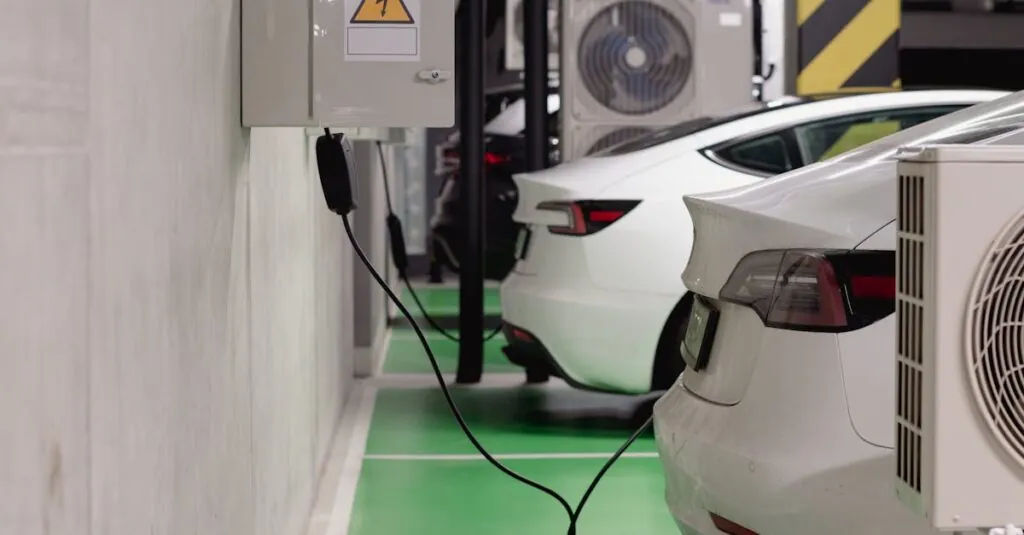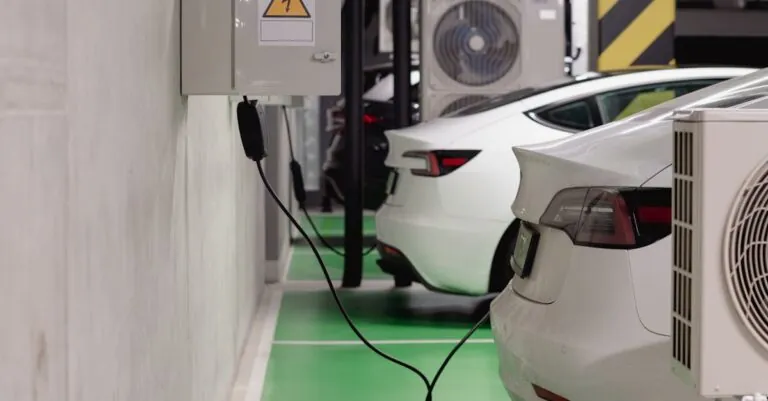Table of Contents
ToggleAs electric vehicles zoom into the mainstream, the question on everyone’s mind is whether public EV charging is free. Imagine pulling up to a charging station, feeling like a rock star, and then realizing you might have to shell out some cash. It’s enough to make anyone’s battery drain faster than their car’s!
Overview of Public EV Charging
Public EV charging stations provide a mixture of free and paid options. Many municipalities and private entities sponsor free charging stations to encourage EV adoption. These locations often include shopping centers, parks, and municipal facilities. Such charging stations typically attract drivers looking to save on electricity costs.
Charging networks like ChargePoint, EVgo, and Electrify America often implement fees. These networks guarantee fast charging but may charge users depending on their subscription plans. Fees may vary based on the station’s location, time of use, and charging speed.
While many stations offer free charging, others impose time limits to enhance station turnover. Some provide complimentary charging for a set duration, promoting quick stops. Certain electric utility companies also offer incentives for users who charge during off-peak hours. Understanding these variables helps drivers manage their charging expenses effectively.
In contrast, other stations adopted tiered pricing models based on usage patterns. Peak times might attract higher fees, while off-peak use may remain free or discounted. Different chargers may also cater to various EV models, affecting available charging options.
As the EV market grows, more public charging facilities emerge. This expansion aims to support urban areas as well as remote locations. Consequently, drivers can find convenient options catering to their needs and preferences. Awareness of the public charging landscape ensures EV owners make informed choices while navigating charging costs.
Benefits of Public EV Charging
Public EV charging offers numerous advantages that greatly benefit both individuals and the environment. Free access points play a significant role in promoting electric vehicle adoption.
Environmental Impact
One of the most notable benefits of public EV charging includes its positive effect on reducing greenhouse gas emissions. Electric vehicles generate fewer emissions compared to traditional gasoline-powered cars, contributing to cleaner air. Charging stations often utilize renewable energy sources, such as solar or wind power, enhancing sustainability. Local ecosystems experience less pollution due to increased adoption of EVs, leading to healthier communities overall. Additionally, public chargers encourage drivers to switch from fossil fuels to electric alternatives, fostering long-term environmental change.
Cost Savings for Users
Cost savings represent a major advantage of utilizing public EV charging stations. Many municipalities sponsor free charging locations, allowing drivers to power their vehicles at no cost. Savings accumulate over time, especially for frequent users of free chargers at shopping centers or city parks. Even when charging stations impose fees, they often offer lower rates compared to gasoline, benefiting budget-conscious drivers. Utility companies sometimes provide incentives for off-peak charging, further decreasing costs. Understanding these financial benefits helps EV owners maximize their savings while enjoying the convenience of public charging networks.
Current Landscape of Public EV Charging Costs
Public EV charging presents a mix of free and paid options. Understanding these choices empowers drivers to make informed decisions.
Free Charging Opportunities
Municipalities and private companies often sponsor free charging stations to support EV adoption. Locations include shopping centers, parks, and municipal facilities, making access convenient. Although many chargers are available at no cost, some enforce time limits to ensure quick turnover. Certain electric utility companies also provide incentives for off-peak charging, contributing to further savings. These free charging opportunities represent a significant advantage for EV owners, enabling them to save money while supporting greener transportation options.
Paid Charging Stations
Charging networks like ChargePoint, EVgo, and Electrify America typically charge fees based on various factors. Subscription plans, location, time of use, and charging speed all impact pricing. During peak hours, expect higher fees, while off-peak charging may offer better rates. These paid stations often remain more affordable than traditional gasoline, benefiting budget-conscious drivers. With a growing number of paid charging stations, EV owners can find convenient options tailored to their needs, ensuring a reliable charging experience on their journeys.
Factors Influencing Charging Costs
Various factors affect the cost of public EV charging. Understanding these elements helps EV users anticipate expenses and make informed decisions.
Location and Accessibility
Certain locations offer different charging costs. Urban areas often feature a higher density of charging stations, which may increase competition and lead to lower fees. Conversely, remote areas may have fewer options, leading to higher prices at the few available stations. Accessibility also plays a crucial role; stations located in prime spots, like shopping centers or major highways, are more likely to charge fees. Free charging typically exists in easily accessible public spaces, promoting EV adoption. Local government initiatives can influence pricing structures, as municipalities occasionally sponsor free charging to encourage green transportation.
Charging Network Providers
Charging network providers significantly impact pricing. Major players like ChargePoint, EVgo, and Electrify America operate a mixture of free and fee-based charging options. Subscription plans offered by these providers may reduce costs for frequent users. Pricing structures often depend on factors such as location, time of day, and charging speed. Peak-hour pricing can lead to higher costs, while off-peak times usually offer better rates. Some networks provide incentives for using specific stations during certain hours, making strategic planning beneficial for users. Understanding these provider-specific pricing models allows EV drivers to optimize their charging expenses.
Navigating the world of public EV charging reveals a mix of free and paid options that cater to diverse needs. While some drivers may find free charging stations a pleasant surprise, others might face unexpected fees. Understanding the various pricing structures and the factors influencing costs can empower EV owners to make smarter choices.
Ultimately, the benefits of public charging extend beyond mere cost savings. By supporting the transition to electric vehicles, these charging options contribute to a cleaner environment and a sustainable future. As the EV landscape continues to evolve, drivers can take advantage of the growing infrastructure to enhance their driving experience while minimizing expenses.







